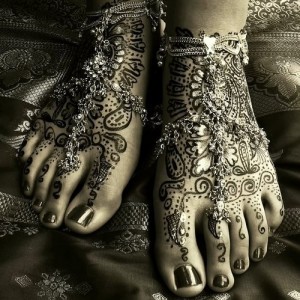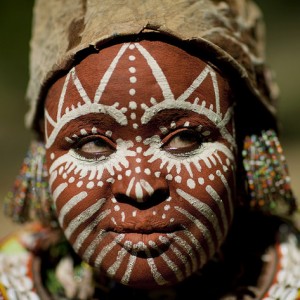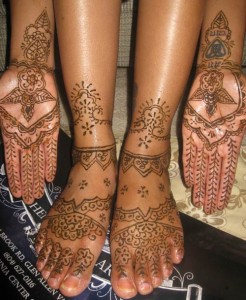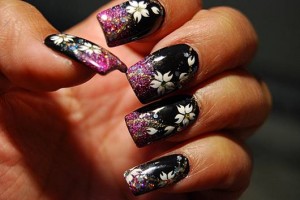
The use of colour and paint as an agent of personal and habitational adornment spans the entire human history. A lot has been said on this blog about paint and its primacy in home décor. Today, we shift our attention to the role paint and colour (in various forms and hues) has been employed by human kind for personal embllemishment.
Different accounts by historians and anthropologists provide conflicting dates for the ealiest records of humans using natural pigments to decorate their bodies. Nonetheless, over the years this practice has perpetuated and even found modern expressions. Let us look at a few forms of paint based body decoration:
- Tribal clay body art: White and red ochre body paint was used to decorate the face and body for many reasons. Oil, clay, chalk and plant dyes were used to form decorative patterns significant to a person’s place in life. In some tribes, body painting was used more like clothes, to form a daily “outfit” worn for a short period of time. Some communities have preserved this art form and still actively practice it.

face painted kikuyu woman
- Henna: Lalli or Henna as it is commonly called is a plant (flower) or back extract which is mixed with some other ingredients like lemon juice and cloves and used to beautify the skin and fingers in artistically wrought patterns. Henna is commonly used by Swahili women and also by Hausa and Fulani women of nothern Nigeria. Brides in these communities go the extra mile to beautify themselves for the weddings. The designs are mainly of different plants and flowers, but a bride is allowed to choose whatever design she wants from the local design dialogue.

henna decorated hands and feet
- Mehndi: Mehndi is the Hindi word used to describe henna and henna body painting. It is used in many parts of the world, but is seen primarily in India, Pakistan, other parts of the Middle East and North Africa. Mehndi is commonly worn by the bride during a wedding ceremony in these cultures. Mehndi are the extremely intricate designs seen on the palms and backs of the hands. Some artists even glue rhinestones onto the art. It is also used on religious occasions, as blessings for the birth of a baby and to bring good fortune.
- Tatoo: This is a form of body modification, made by inserting indelible ink into the dermis layer of the skin to change the pigment. Tattooing has been practiced for centuries in many cultures spread throughout the world. The Ainu, an indigenous people of Japan, traditionally had facial tattoos. Today, one can find Berbers of Tamazgha (North Africa), Māori of New Zealand, Hausa people of Northern Nigeria, Arabic people in East-Turkey and Atayal of Taiwan with facial tattoos. The use of Tatoos has evolved to become something akin to a movement; a visual language.
- Nail Art: Everyone all around the world knows how important nails are in a woman’s overall beauty and this has led to the emergence of nail stylists. Nail art is the practice of painting decorative paterns on the finger or toe nails. Using a variety of innovative nail art techniques a nail stylist can transform the nails and make a bold fashion statement.

- nail art
The above are but a few forms of body decoration that make use of colour pigments. Inspite of the differences in the cultural motivations for these practices, the decorative motivation is common across the board. It appears; paint and colour have a way of finding their place in just about any form of decorative exercise.
Posted by Pambo Maridadi @ Crown Paints Kenya Ltd Email: info@crownpaints.co.ke






